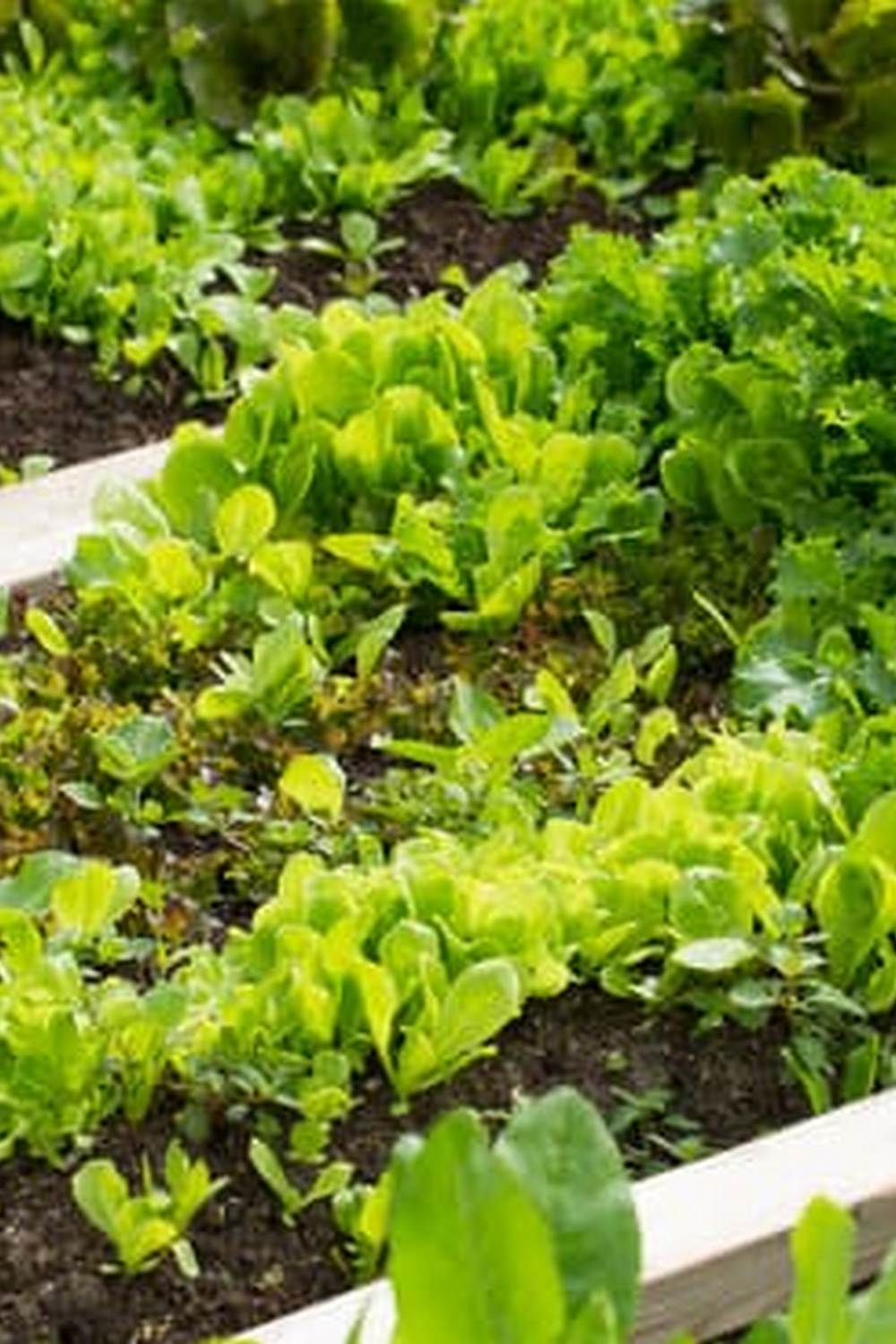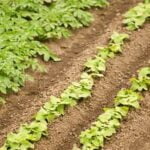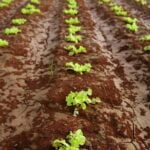Are you looking to start your own vegetable garden in zone 5b? Understanding the specific requirements and challenges of this particular zone is crucial for successful gardening. From selecting the right vegetables to dealing with common pests and diseases, this article will provide all the information you need to create a thriving vegetable garden in zone 5b.
Zone 5B, known for its cold winters and relatively short growing season, presents unique considerations for vegetable gardening. It’s important to carefully choose vegetables that are well-suited for this climate and to employ best practices for soil preparation, planting, and care. By understanding the nuances of gardening in zone 5b, you can maximize your yields and enjoy a successful harvest.
In this comprehensive guide, we will explore everything from selecting the right vegetables for zone 5B to preparing the soil, planting tips, dealing with pests and diseases, as well as methods for extending the growing season. Whether you’re a beginner or experienced gardener, this article will equip you with the knowledge and techniques needed to create a flourishing vegetable garden in zone 5B.
Choosing the Right Vegetables for Zone 5B
When selecting the right vegetables for your Zone 5B vegetable garden, it’s important to choose varieties that are suited to the cooler temperatures and shorter growing season characteristic of this zone. Here are some vegetables that thrive in Zone 5B:
- Leafy Greens: Vegetables like spinach, kale, and lettuce are excellent choices for Zone 5B as they can tolerate cooler temperatures and even a light frost.
- Root Vegetables: Carrots, beets, radishes, and turnips are well-suited to the climate of Zone 5B and can be grown successfully with proper soil preparation.
- Cruciferous Vegetables: Broccoli, cauliflower, cabbage, and Brussels sprouts can be grown in Zone 5B with careful attention to timing and protection from late spring frosts.
It’s also essential to consider the length of the growing season when choosing vegetables for Zone 5B. Opt for varieties with a shorter maturity date to ensure a successful harvest before the first fall frost.
In addition to considering cold tolerance and maturity date, it’s important to select vegetable varieties that are well-adapted to your specific microclimate within Zone 5B. Factors such as sunlight exposure, wind patterns, and moisture levels can vary significantly within this zone, so it’s crucial to choose vegetables that will thrive in your particular gardening location. By selecting the right vegetables for your Zone 5B garden, you’ll set yourself up for a successful growing season.
Best Practices for Preparing the Soil in Zone 5B
When it comes to vegetable gardening in Zone 5B, preparing the soil is crucial for successful plant growth and high yields. The harsh winter conditions in this zone can take a toll on the soil, making it essential to give your vegetables the best possible foundation for healthy growth. Here are some best practices for preparing the soil in Zone 5B:
1. Test the Soil: Before you start planting, it’s important to test the pH and nutrient levels of your soil. You can purchase a DIY testing kit or send a sample to a professional lab for analysis. This will help you determine if any amendments are needed to optimize growing conditions for your vegetables.
2. Amend Your Soil: Once you have your soil test results, you may need to amend the soil with organic matter or fertilizer to ensure that it has the right balance of nutrients for healthy plant growth. Compost, aged manure, and other organic materials can be worked into the soil to improve its structure and fertility.
3. Consider Raised Beds: In Zone 5B, raised beds can be a smart solution for vegetable gardening, especially if the existing soil is poor quality or if drainage is an issue. Raised beds allow for better control over soil composition and drainage, providing optimal growing conditions for your vegetables.
By following these best practices for preparing the soil in Zone 5B, you can set your vegetable garden up for success from the very beginning. Taking the time to test, amend, and optimize your soil will pay off with healthier plants and bountiful harvests throughout the growing season.
Tips for Planting and Caring for Vegetables in Zone 5B
When it comes to planting and caring for vegetables in Zone 5B, there are several key factors to consider in order to ensure a successful harvest. From timing your planting to providing proper care throughout the growing season, there are many tips that can help you make the most of your vegetable garden in this zone.
Timing Is Key
In Zone 5B, the growing season is relatively short, with the last frost typically occurring in late May and the first frost as early as mid-September. This means that it’s important to choose vegetables that can thrive in these conditions and to time your planting accordingly.
Cold-hardy vegetables like lettuce, spinach, radishes, and peas can be planted as soon as the soil is workable in early spring, while warm-season crops like tomatoes, peppers, and squash should be planted after the danger of frost has passed.
Provide Adequate Water and Nutrients
Once your vegetables are planted, it’s important to provide them with adequate water and nutrients throughout the growing season. In Zone 5B, where summers can be hot and dry, this often means supplementing rainfall with regular watering and applying mulch to help retain moisture. Additionally, fertilizing with a balanced fertilizer or organic compost can help ensure that your vegetables have access to the nutrients they need to thrive.
Protecting From Frost
In Zone 5B, unexpected frosts can pose a threat to tender vegetable plants even after the last expected frost date has passed. Using row covers or cloches can provide protection from late spring frosts, while covering plants with blankets or bringing potted plants indoors can help protect them from early fall frosts. Being prepared for these potential threats is essential for a successful harvest in this zone.
By following these tips for planting and caring for vegetables in Zone 5B, you can maximize your chances of a bountiful harvest despite the challenges presented by this climate. With careful planning and attention to detail, it’s possible to enjoy an array of fresh homegrown produce throughout the growing season.
Dealing With Common Pests and Diseases in Zone 5B
Zone 5B presents its own set of challenges when it comes to vegetable gardening, including the presence of common pests and diseases that can affect the health and yield of your crops. It is important for gardeners in this zone to be aware of these potential issues and to have a plan in place for dealing with them effectively.
One common pest that can be found in Zone 5B vegetable gardens is the cabbage worm, which can quickly decimate crops such as broccoli, cabbage, and kale if left unchecked. To prevent infestations, regular inspection of plants and the application of organic insecticides like Bacillus thuringiensis (BT) can help keep these pests at bay.
In addition to pests, Zone 5B also faces the risk of diseases such as powdery mildew on plants like cucumbers and squash. Proper spacing of plants, good air circulation, and the use of fungicidal sprays can help prevent the spread of powdery mildew. It is crucial for gardeners in this zone to stay vigilant and address any signs of pests or diseases promptly to minimize their impact on vegetable crops.
| Pest/Disease | Prevention/Treatment |
|---|---|
| Cabbage Worm | Regular inspection; Application of organic insecticides (e.g. BT) |
| Powdery Mildew | Proper spacing; Good air circulation; Use of fungicidal sprays |
Maximizing Vegetable Yields in Zone 5B With Season Extension Techniques
When it comes to vegetable gardening in Zone 5B, the relatively short growing season can be a challenge. However, with the use of season extension techniques, gardeners can significantly prolong the growing period and increase their vegetable yields.
One such technique is the use of cold frames or hoop houses, which provide protection from frost and allow vegetables to thrive even as temperatures drop. By using these structures, gardeners can start planting earlier in the spring and continue harvesting well into the fall.
Another effective method for extending the growing season in Zone 5B is through the use of row covers. These lightweight blankets are laid directly over crops, providing insulation and protection from cold temperatures. Row covers also help to prevent pest damage and can be left on throughout the entire growing season. This allows gardeners to plant certain vegetables earlier than usual, leading to an extended harvest period.
In addition to physical structures and covers, utilizing mulch can also help extend the vegetable growing season in Zone 5B. Mulch acts as a protective barrier for plants, helping to retain moisture and regulate soil temperature. This is especially beneficial for heat-loving vegetables such as tomatoes and peppers, which may struggle during cooler periods in Zone 5B. By using mulch, gardeners can maintain optimal growing conditions for their vegetables throughout the entire season.
| Season Extension Technique | Benefits |
|---|---|
| Cold frames/hoop houses | Protects from frost, extends planting and harvesting seasons. |
| Row covers | Provides insulation, prevents pest damage, allows for early planting. |
| Mulch | Retains moisture, regulates soil temperature for heat-loving vegetables. |
Harvesting and Storing Vegetables in Zone 5B
Timing Is Key
In zone 5B, the timing of harvesting vegetables is crucial. With a shorter growing season compared to warmer zones, it’s important to keep a close eye on the maturity of your vegetables. Harvesting too early can result in underdeveloped flavor and texture, while waiting too long can lead to reduced quality and an increased susceptibility to pests and diseases.
Proper Harvesting Techniques
To ensure the best quality produce, it’s essential to use proper harvesting techniques. When picking vegetables such as tomatoes or peppers, always use sharp shears or gardening scissors to prevent damage to the plant. For root vegetables like carrots and beets, gently loosen the soil around the base of the plant before pulling it out to avoid breakage.
Effective Storing Methods
After harvesting your vegetables, the next step is proper storage to prolong their freshness. In zone 5B, where temperatures can fluctuate drastically, consider using a root cellar or cool basement for storing root vegetables like potatoes and onions. For leafy greens and herbs, consider using airtight containers or vacuum-sealed bags to maintain their crispness and flavor.
By following these best practices for harvesting and storing vegetables in zone 5B, you can enjoy your garden’s bounty well into the colder months.
Success Stories
In conclusion, vegetable gardening in zone 5B can be a rewarding and fulfilling experience for those willing to put in the effort. By understanding the climate and soil conditions of this zone, gardeners can choose the right vegetables and implement best practices for preparing the soil. Through careful planning and attention to detail, it is possible to overcome common challenges such as pests and diseases, as well as maximize yields through season extension techniques.
One of the most inspiring aspects of vegetable gardening in zone 5B is the success stories of fellow gardeners who have managed to create thriving vegetable gardens in this challenging environment. These success stories serve as valuable examples for others to emulate, showing that with dedication and knowledge, it is possible to achieve bountiful harvests even in harsh climates. Learning from these success stories can provide valuable insights and inspiration for both novice and experienced gardeners alike.
Ultimately, while vegetable gardening in zone 5B may present its own set of unique challenges, it also offers numerous opportunities for growth and learning. By following the advice and experiences of those who have succeeded before them, gardeners can create their own success stories and contribute to a thriving community of zone 5B vegetable gardens.With determination and the right approach, anyone can enjoy the rewards of growing their own fresh produce in zone 5B.
Frequently Asked Questions
What Vegetables Grow Best in Zone 5b?
Vegetables that grow best in Zone 5b include cool-season crops such as lettuce, spinach, kale, and peas. These vegetables thrive in the cooler temperatures of Zone 5b and can be planted in early spring or late summer for a fall harvest.
What Is the Difference Between Zone 5a and 5b?
The main difference between Zone 5a and 5b is the average minimum winter temperature. Zone 5a has colder winters with temperatures dropping to -15 to -20 degrees Fahrenheit, while Zone 5b has slightly milder winters with minimum temperatures of -10 to -15 degrees Fahrenheit.
When Should Zone 5 Be Planted?
In Zone 5, it’s important to time your planting according to the last expected frost date, which is typically around mid-May. Cool-season crops can be planted as soon as the soil can be worked in early spring, while warm-season crops should be planted after the danger of frost has passed in late spring or early summer.

If you’re looking to get into vegetable gardening, or are just looking for some tips on how to make your current garden better, then you’ve come to the right place! My name is Ethel and I have been gardening for years. In this blog, I’m going to share with you some of my best tips on how to create a successful vegetable garden.





